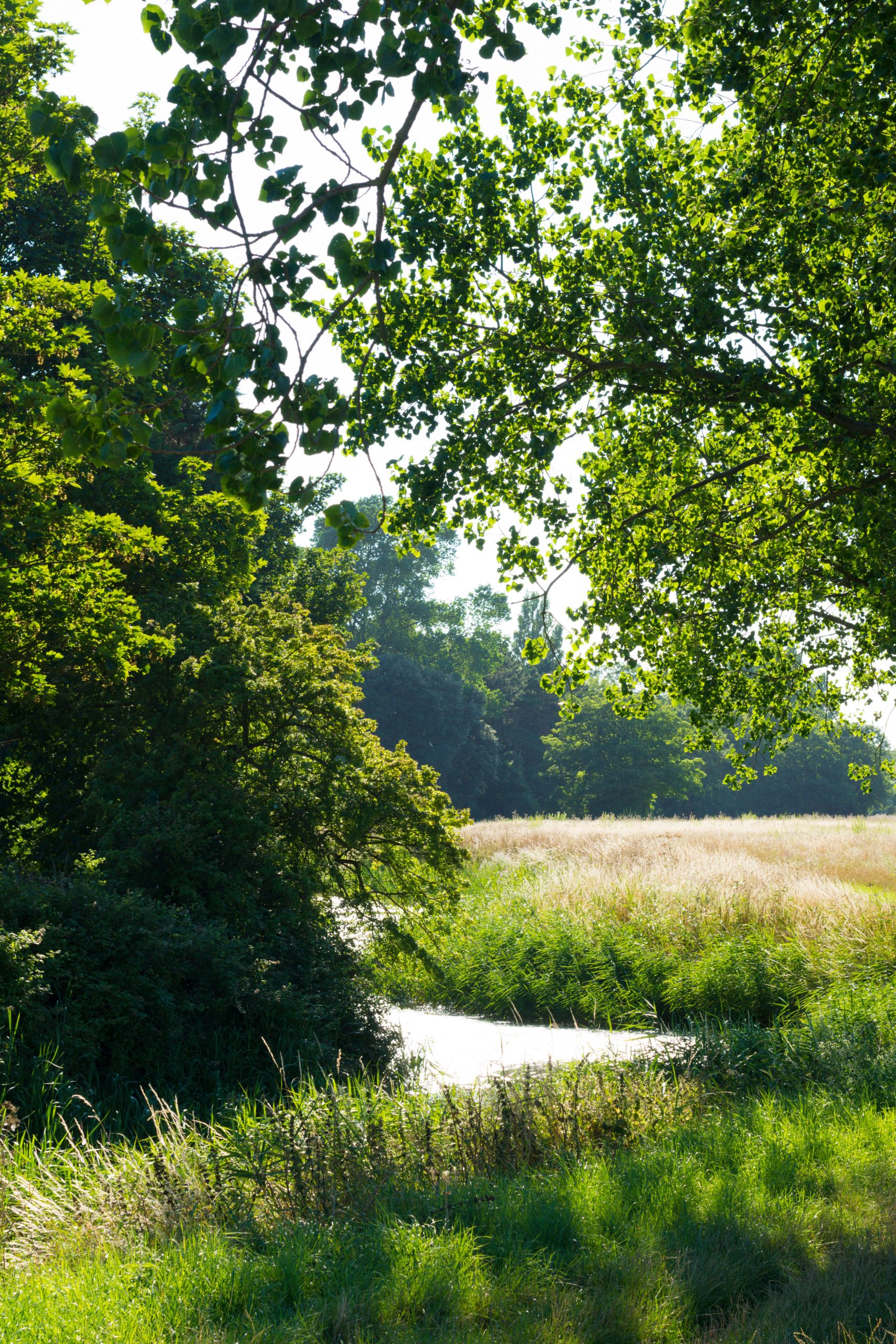Kent's Garden of Eden: Where vineyards rub shoulders with an Iron Age Hill Fort from 1 BC
There's much history and beauty to be found in the Stour Valley, as Fiona Reynolds finds out.


The great towers of Canterbury Cathedral soar skywards from every direction as they have for centuries. Canterbury was the pilgrimage destination and, as Chaucer reminds us, it was the beauty of an April spring that ‘longen folk to goon on pilgrimages’. Longing for such beauty myself, I arrive by train in the city, dump my bags and set off from the cathedral to walk along the River Stour.
My walk is inspired by an evocative painting: Canterbury Meadows by T. S. Cooper, of the water-drenched, almost treeless Stour Valley landscape in the 1870s. Heavy, angular cows stand knee-deep in the water meadows and the cathedral rises majestically in the distance, no trappings of the city visible.
It’s a compelling image and, as I leave the city walking westwards, I keep turning to see if the view is remotely replicable today. The answer is not really. The river has been straightened, the trees have grown up and, above all, the modern city has intruded.
There are now three huge embankments in the first mile: first the railway, then the A2, which now bypasses the city, and finally the A28, which approaches Canterbury from the south-west. As the path goes under the A2, I do see the towers peeking above the trees and, for a moment, connect with the image that would have inspired tired pilgrims as they approached their destination.
My purpose today is not pilgrimage. Instead, I’m exploring a small part of the Kentish countryside known as the Garden of England. The abundance of orchards and hop-gardens here creates an intimate, welcoming landscape, some of it protected by the Kent Downs AONB.

I walk westwards for about an hour along the River Stour, taking advantage of the well-managed, surfaced path and excellent signposting. There’s evidence of work to reinstate the meadows and, as I pass by the settlements of Thanington, Milton and Horton, I pick out the old manor houses and mills among the newer developments. Chartham boasts a substantial paper mill, which is still operating, and I wiggle through the old village centre, by the church and green, before leaving the river to walk north.
Here, I meet my first orchard: old trees, well pruned and still bare of greenery, in a field above the river. I walk through it and head up the hill to Chartham Hatch, until I suddenly reach a vineyard, its angular twisted stems sharp against the blue sky. The 21st-century fruit for England, I wonder, as I navigate the field.
Exquisite houses, the beauty of Nature, and how to get the most from your life, straight to your inbox.
At Chartham Hatch, I join the North Downs Way, which takes me straight to No Man’s Community Orchard nature reserve. This is an old orchard site (named because it straddled the parish boundary and thus belonged to ‘no man’), which is today managed by the community for Nature, green space and social benefits. It’s a wonderful place, with old and new trees cohabiting and a surprisingly realistic sculpted wooden snake lurking in the grass.
My path winds through beautiful woodlands of densely coppiced chestnut, a mass of soaring, bleached stems with a deep litter of dry chestnut leaves coating the woodland floor. And then the surprise: Bigbury Camp Iron Age hill fort, a massive ancient monument that Kent Wildlife Trust has cleared of coppice to expose its bones. It was a hugely important defensive site from the 1st century BC and believed to be the site of one of Julius Caesar’s first battles in England in 54BC. It’s a spectacular place, steep, mysterious and beautiful.
Emerging from the peaceful woodland, I find myself on a bridge over the busy A2, firmly back in the 21st century. My path now follows the road before cutting across Golden Hill, where more huge new vineyards have been planted, then plunging back into the city. My last view is, once more, of the cathedral towers, now appearing above houses and streetlights: not romantic, but a reminder that, thankfully, the important things in life survive.
Fiona Reynolds is a passionate walker, author of The Fight for Beauty and chair of the Governing Council of the Royal Agricultural University
Fiona Reynolds is chair of the Food, Farming and Countryside Commission, the former director-general of the National Trust, former Master of Emmanuel College, Cambridge, and the author of The Fight for Beauty. Follow her on Twitter @fionacreynolds.
